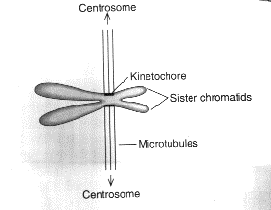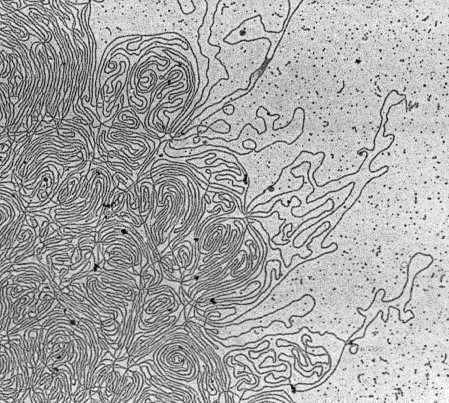
There are so many mitochondria and ribosomes in the cell that each daughter cell is usually assured of getting some. But ensuring that each daughter cell gets two (if diploid) of every gene in the cell requires the greatest precision.
This image (provided by J. R. Paulson and U. C. Laemmli) provides a graphic illustration of the problem. It shows a bit (no more than 3%) of the single molecule of DNA released from a single human chromosome. (The chromosome was treated to remove its histones). Remembering that this is 3% of the DNA of only one of the 46 chromosomes in the human diploid cell, you can appreciate the problem faced by the cell of how to separate without error these great lengths of DNA without creating horrible tangles.

The answer:
These tasks are accomplished by mitosis. Mitosis is the process that distributes one of each duplicated chromosome (as well as one centriole) to each daughter cell. It is convenient to consider the process in 4 phases.

Mitosis is the process of separating the duplicates of each of the cell's chromosomes. It is usually followed by division of the cell. However, there are cases (cleavage in the insect embryo is an example) where the chromosomes undergo the mitotic process without division of the cell. Thus a special term, cytokinesis, for the separation of a cell into two.
In animal cells, a belt of actin filaments forms around the perimeter of the cell, midway between the poles. As the belt tightens, the cell is pinched into two daughter cells.
In plant cells, a membrane-bounded cell plate forms where the metaphase plate had been. The cell plate, which is synthesized by the Golgi apparatus, supplies the plasma membrane that will separate the two daughter cells. Synthesis of a new cell wall between the daughter cells also occurs at the cell plate.
| Welcome&Next Search |